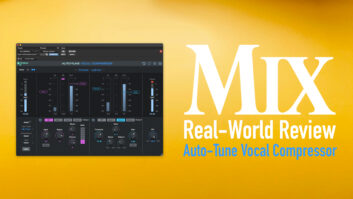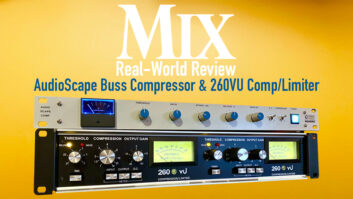It appears that Geoff Daking has been hard at work. In addition to a new series of 500-series modules (mic pre, EQ, comp), Daking has released the FET III dual-channel compressor/limiter, the follow up to the single-channel FET II. Based on my experience having reviewed Daking’s Mic Pre One, I’d say that the FET III holds true to the values of simplicity, smart design, hi-fidelity and reasonable prices, at least for top shelf gear, that characterized the Mic Pre One.
Features
The FET III represents an extension of Daking’s FET II, single-channel compressor with the same audio path, detectors and Class-A, discrete components, highlighted by only minor differences.
The III uses electronic balancing of inputs and outputs via THAT Corp. differential amplifiers, whereas the II balances via transformers (albeit 1:1 un-colorful ones). Maximum output of the II is +24 DB, with +30 on the II. Another component level difference is the III’s use of continuously variable pots rather than the stepped switches of the II (except for ratio, which remains switched).
The biggest change (improvement to my ears) is the addition of variable high pass filters in the detector stage, ranging from out up to 200 Hz, to prevent pumping and odd behavior with bass heavy program material. Stereo linking is achieved on the III with a rather unusual continuously variable link control, which allows standard mono or stereo … or the unlinking and partial linking of sources to fine tune their correlation (for tweaking different, but related, sources) and this is not keyed by a control voltage but by actual summed audio, which is reportedly more accurate.
Controls also include threshold, attack (from a mere 250 microseconds to 64 ms), release (500 ms at fastest, with an Auto setting modeled after a vintage A&D Compex F760X), ratio (either 1.5, 2, 3, 5, 10 or 20:1) and make-up gain. The FET III utilizes large VUs (for level or gain reduction) an outboard power supply and is fully RoHs-compliant for “green” engineers.
In Use
Without an actual FET II here for comparison, I was relegated to judging the III on its own merits … of which there are many. To make a long story short, the III is a classic FET compressor. If we play a little word association with “FET comp” your answers are surely “quick”, “clean” and “transparent” and they all apply to the III.
The III is quick, really fast … faster on the attack than I ever use and capable of getting downright grabby on transients if you’d like. Slow it down a little and the III gets polite and smoothly congeals, with a musical gelling. The release is widely forgiving, very nice and steady in auto, allowing sculpting on your part and it only gets pumpy if you disable the HPF. In fact, the HPF is the key to where you set your response; no surprise, as dumping everything below 200 Hz out of your detector is going to result in very different ratio, attack and release decisions/options.
The stereo linking feature is definitely a plus, in that now you can do a few more things (partial keying, allowing the stereo field to shift for shimmer, etc.), but I can’t say I’d use it extensively. It can be used artfully for animated tom tom and percussion mixes/sub-mixes (at about halfway linked it’s punchier and more “bouncy”) and subtly on whole mixes too.
The 2:1 ratio was first choice on overheads and most vocals, slightly slowed and slightly filtered, I got density and consistency without evidence anything had been done (frequency neutrality and no discernible artifacts). I gravitated to 3 or 5:1 for dynamic vocalists, bass guitars and tricky “thumpin’ & pickin” acoustic guitars where I dug in deep (-10 dB peaks) without sounding “compressed.” I tried 10:1 and 20:1, but never could get anything I really liked … then again that’s on me as I seldom use high ratios unless I’m brick-wall-limiting or four-buttoning an 1176 and aiming to mangle. (No, the II will not gnash teeth like an 1176.)
But the best part of using the FET III? Barely using it. That is … only two dB tops, 1.5:1, HPF at 200, medium quick attack, auto release, just gently massaging a mix. Case in point, a tricky little 1960s mod-inspired mix I had to revise after sleeping on it. I made minor mix level changes and moved the mix-bus FET III from moderate to the auto “Compex” release (this envelope starts out fast and then slows to as much as eight seconds), which sounds very natural and musical on stereo program. The client went positively nuts and asked me how the re-mix got so smooth and perfectly balanced?
Maybe the FET III is not as subtly euphonic as an SSL, or growly, or obvious … its “what went in comes out, except now its more consistent, dense and unified.” I’d say the signal quality of the III is mastering good, although detented controls would surely be preferred for repeatability and ease of charting.
Summary
At $2,200 list, the FET III is a professional piece in price as well as design and function. Considering its US build, wide and classic FET capabilities, attractive look, quality components and wise design I would say it is worth the price and comes recommended. You know … if I can just find out where those attack and release time values correspond with the little dots of the legend and if business keeps picking up this spring … I’m gonna have to get myself one of these FET IIIs, for mix sake.
Daking Audio • www.daking.com







